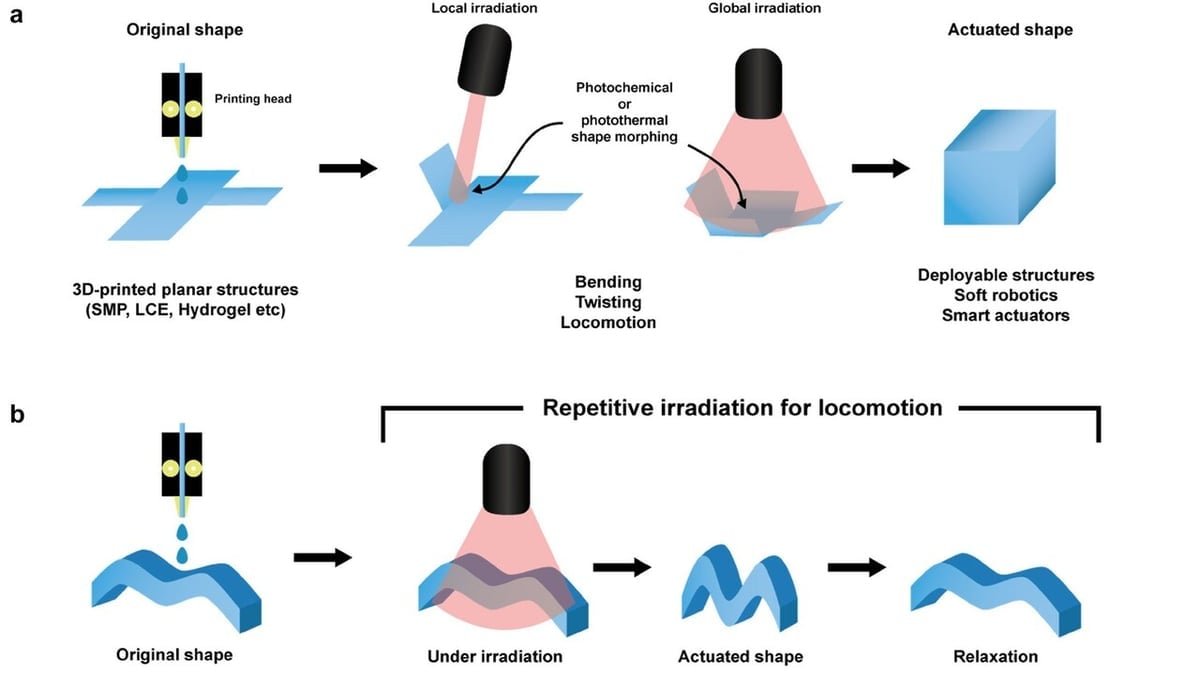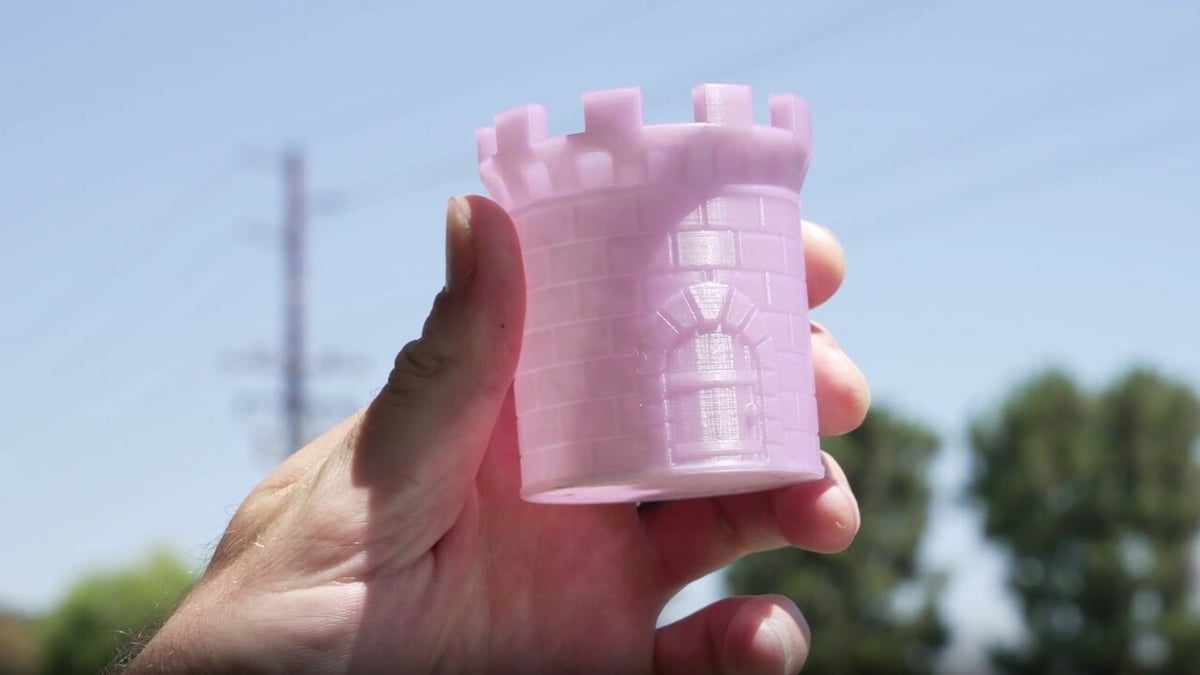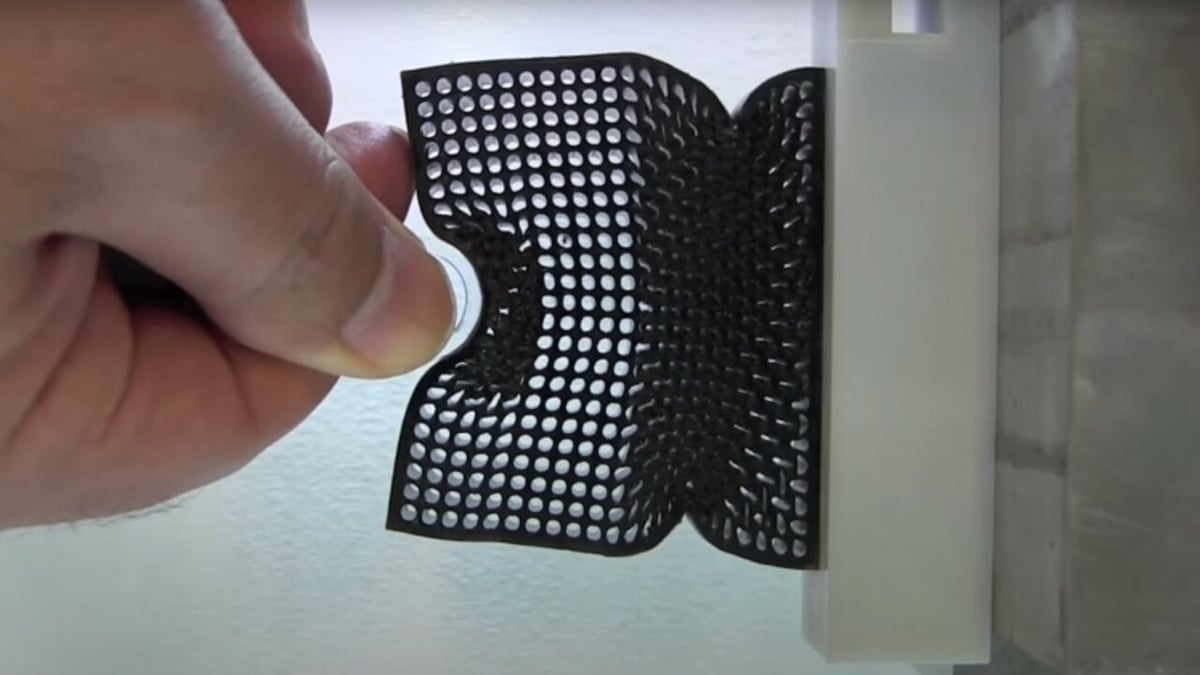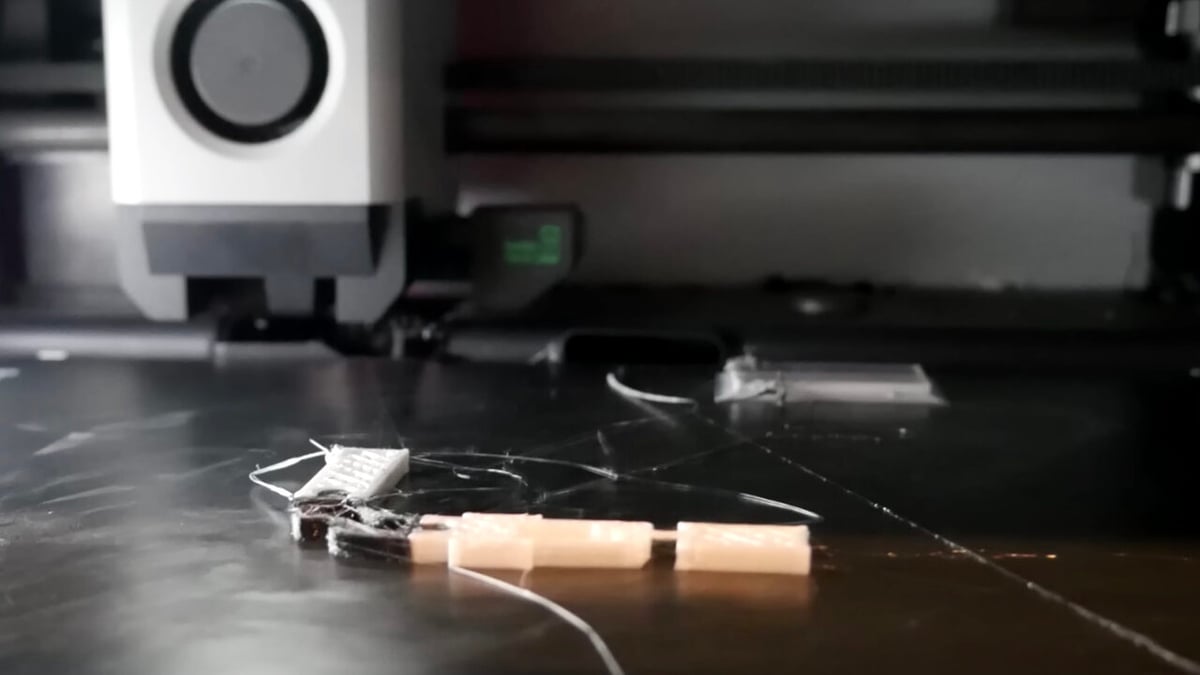3D printing, also known as additive manufacturing, turns digital blueprints into physical objects by building them layer by layer. 4D printing is the next generation of this technology. 4D prints offer a more mechanical way to program the things we interact with in everyday life but with less reliance on digital code or computing systems. The basis of simple 4D printing requires the printed object to be composed of two things: one part that can be manipulated by outside stimuli (or “triggers”) and another part that acts as a carrier to allow the first part to be 3D printed.
Think of 4D printing as a way to make unique functional parts that are too small, too hard to access, too intricate to be made by simple 3D printing, or too individualized to be manufactured at scale. The technology has been and will be used to prototype the first manufacturing methods for organ implants (from hearts to eyes) and to make individualized products such as prosthetics, automated hazardous repairs, safety measures, visual indicators, and simplified methods of measurement related to the stimuli.
Join us as we peer into the 4th dimension. We’ll discuss how 4D printing came to be and what makes this type of printing four-dimensional. We’ll also cover the most common reaction mechanisms, developments in the field, and even ways you might be able to 4D print at home.
Background

You can’t really pinpoint 4D printing to one inventor. In the first instances of what would be accepted now as 4D printing, researchers were taking advantage of 3D printing’s rapid prototyping capabilities to create responsive materials. A large number of research projects surrounding the development of responsive or smart materials were being conducted in the late 1990s.
In 2003, Yasuyuki Sakai at the University of Tokyo used a technique similar to the stereolithography (SLA) printers available now to 3D print a polymer that changes (dissolves) when exposed to UV light. This application was used to create channels in a material with the intention of creating a material similar to living tissues. Previously, other hydrogels had been made that could respond to pH, light, electrical charge, and temperature in the 90s, but this was the first case we could find using a homemade 3D printer to do so.
The term “4D printing” was coined in 2012 as a strategic usage of bioprinting, a technique developed for hydrogel printing after the increase in the availability of 3D printers. Today, 4D printing is generally understood as a smart material that has been created on a 3D printer. The popularization of this definition is largely credited to the creator of MIT’s Self-Assembly Lab Skylar Tibbits.
The 4th Dimension
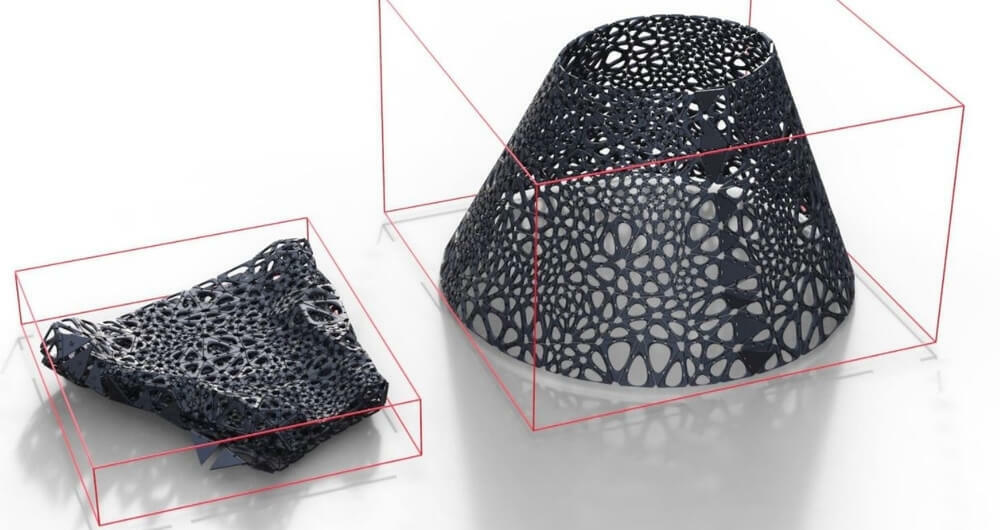
You may have experienced an undesired change in your own 3D prints – for example, when you’re printing with ABS and the part begins to warp mid-print. This change happens over time as a response to the ambient or build plate temperature being too low. The concept of 4D printing is to control when and how such changes occur.
In FDM and resin-based printers, the entire process is usually based on changes to the printing material that occur as a response to heat and UV light. These stimuli, also known as trigger mechanisms, cause the material to remain in the desired shape under ambient temperatures. In FDM, the change caused by heat can be reversed, so a part could be “programmed” to soften at a certain trigger temperature, like the glass transition point, or melt at the melting point.
Generally, the outcome of 4D printing is a motion, but researchers have also designed other responses, such as the following:
- Release of chemicals
- Opening or closing of a circuit
- Changes in surface area or density, which might determine whether an object floats or sinks, sticks, or detaches
- Changes in color and transparency
- Strengthening or weakening of the material
In summary, 4D printing yields programmed objects that execute their 3D-printed “code” when exposed to triggers, and the programmed changes can be observed and quantified over time.
Triggers & Materials
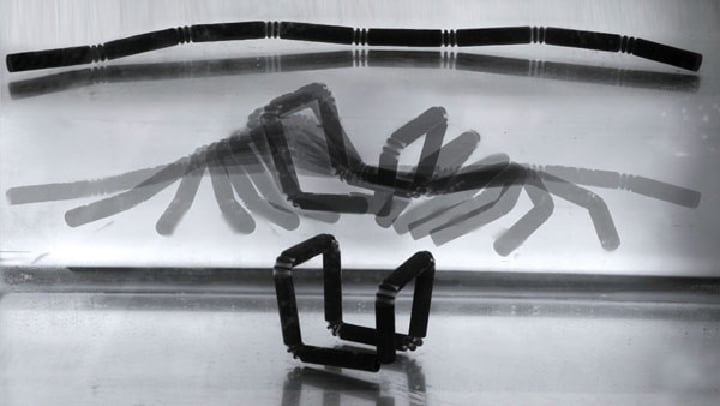
Every 4D printing process requires smart materials that are able to react to triggers. The materials can even be categorized according to their triggers. Water, heat, light, and electrical currents are common triggers, but there are others – some of which have to be explored in depth through research. Below, we’ll discuss the most common ones.
Water
Water is thought of as one of the reasons for life. Instead of mixing, some things – such as fats and oils – form droplets or spheres when coming into contact with water. This spherical shape allows for contact but with the least amount of surface and a minimized potential energy between the water and other substances. This is one of the reasons RNA, DNA, organelles, and cells are thermodynamically possible.
This has inspired researchers in their development of smart materials that can be used in daily life. Water also has a greater heat capacity than air, so most temperature sensitive smart materials are used in water.
One group of 3D printable materials that have shown this kind of response to water is called hydrogels. Hydrogels are a type of polymer with additional linkages that change the chemical structure from being chain-like to mesh-like. This mesh-like structure is insoluble in water but is filled with fluids, giving the hydrogel both liquid and solid-like behaviors.
You may already be using hydrogels in your everyday life: contact lenses, hygiene products, or wound dressings, for example. Most hydrogels swell or shrink in response to being placed in water, and this can be used to engineer a response. One of the most prominent uses of 4D printed hydrogels uses this swelling and shrinking effect to act as an actuator, or valve opening and closing.
Hydrogels have been used in the research of smart materials for over thirty years. They’ve been 4D printed into shape-shifting and shape-remembering objects. In some projects, they’ve been engineered to respond to more than just water. Yet water is an important component of hydrogels, and its presence can change how a hydrogel responds in many other situations.
Ultraviolet (UV) Light
UV light acts as a source of energy when applied to a smart material. This wavelength of light can be used in a targeted manner to create heat, stimulate photo-initiators, or create cross-links within a material. This is a very practical trigger, as it could simply mean exposing a 4D print to sunlight.
The materials that have been researched the most for UV light-based 4D printing applications are UV-reactive gels, epoxy resins, and liquid crystal elastomers (LCEs). Most often, when these are included in a 4D print, their response to UV light is a chemical reaction within mixed-in photo-initiators that allows them to create bridges between the other liquid parts. As the gels, resins, or elastomers become connected together, their increase in molecular weight lowers their melting point and allows them to become solid. In these situations, the structure created by the bridges can serve as a memorized form; when bent or twisted, the object can return to this remembered state.
Changing the intensity or wavelength of light can be used to generate heat that can destroy or replace these bridges in ways that allow the 4D printed object to change shape. This has been used to create complex smart objects, like a self-opening and closing flower. The heat generated from UV light can also be used to raise the temperature of polymers like those commonly used in FDM 3D printing to temperatures at which they soften or melt as discussed above.
Magnetism, Electrical Current, & Electromagnetism
The use of magnets is considered by some to be a shortcut in 4D printing. Most naturally occurring rare earth magnets lose strength when exposed to heat, removing them from consideration of FDM printing or being in contact with resin during curing. However, this doesn’t stop them from being attached or placed into 3D printed objects. This would allow the printed object to be attracted or repelled when introduced to metal or metallic objects. If the printed materials are made with metal-infused or alloy filaments, this gives the print a unique ability to interact with itself.
A 4D printed object can generate heat when an electrical current is applied, given the proper combination of electrically conductive and heat-responsive materials. Conductive FDM filaments containing materials such as graphene or carbon fiber have a high enough internal resistance that they release heat when an electrical current is applied. If these filaments are fused with other FDM filaments with low glass transition temperatures, such as PLA, a targeted softening can be achieved. The creation of electrically conductive filaments also creates the possibility to 3D print solderless electrical connectors similar to breadboards.
Those materials that can carry electrical current also generate an orthogonal magnetic field in relation to the direction of the current. This phenomenon is called electromagnetism and is one method of circumnavigating the loss in magnetism of rare earth magnets while achieving the same effect. The ability to create a 3D printed electromagnet opens up the possibility to 3D print relays and other simple electronic devices if it can be done so safely.
Research & Commercial Applications
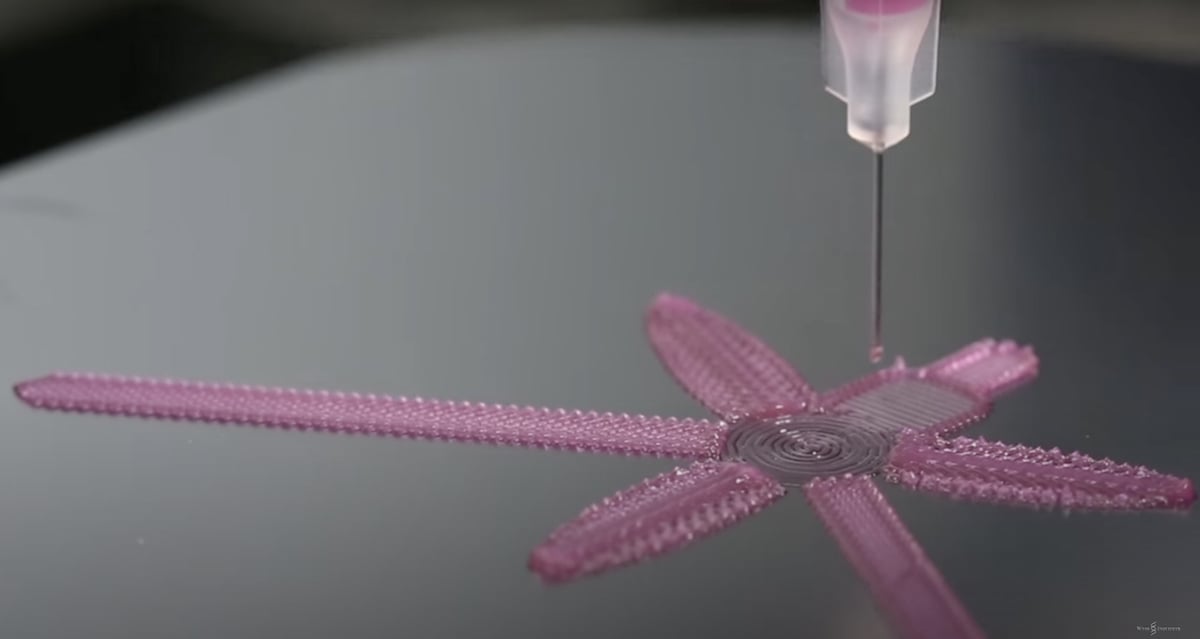
Research labs and commercial developers focus on “programming” the object’s desired shape into the micro-structure of standard materials. The topics that seem to be making the most progress in being commercialized for production by 4D printing methods include hydrogels, smart filaments, and a variety of functional devices. Some might even make an appearance in everyday life.
Hydrogels
Hydrogels are one of the first materials engineered for smart or programmable applications. Hydrogels are still on the cutting edge of research and are already being applied to real-world problems. Harvard’s Wyss Institute looks to develop biomedical and healthcare applications, while the University of Wollongong is home to the first 4D-printed water valve.
One of the most promising applications of 4D-printed hydrogels is cardiac patches in applied medicine. In a collaborative effort, researchers at George Washington University created a 4D printed patch that can be implanted surgically to replace damaged tissue and aids the heart in repairing itself following a heart attack. They used a beam-scanning stereolithography printer, gelatin methacrylate, and polyethylene glycol diacrylate to create a scaffold for human-induced pluripotent stem cell-derived cardiomyocytes. The patch exhibits shape tuning and participates in muscle contraction, all while helping the heart repair nearby tissue.
Research on the development of hydrogels for 4D printing is common at most universities, and continued research in healthcare applications is being promoted by 3D printing giants such as 3D Systems and Stratasys. Even with all of this support, there’s a lack of commercial products on the market that were produced using 4D printing technology. This is ironic, as 3D printing is used to create molds or final versions of retainers, dental implants, stents, and functional prosthetics in healthcare, but 4D printing itself has not been translated.
Smart Filaments
The continued development of FDM filaments with ready-to-print 4D functions will likely be popular with hobbyists. The products that are already available are growing in popularity.
Scion Research, for example, has developed a flexible, color changing 4D filament that changes from black to yellow with changes in temperature. Similar products are available from a variety of filament manufacturers, and Hatchbox offers filaments that change color with exposure to sunlight.
Many more new and novel functional filaments are likely to reach the market soon. Researchers at the University of Stuttgart have designed humidity-reactive filaments for 4D printing. Prints made from this filament have the ability to stretch, extend, and move as designed in response to moisture in the air. At Purdue University, there’s patent-pending research that allows sensor particles that act as embedded strain gauges to be added to filaments.
Functional Devices, Printers, & Strategies
Altogether, it seems that most innovations in 4D printing arrive on the shoulders of existing 3D printing methods. Whether using biojet, inkjet, laser sintering, FDM, or resin printing, researchers are finding ways to modify and combine multiple techniques that allow existing 3D printing materials to be used in 4D printing. Here’s a taste of the projects that are being developed:
- Singapore University of Technology and Design: Researchers have developed a new process that integrates many 3D printing methods into one. To do this, the researchers used a commercially available multi-material 3D printer with enhancements that allow a wider range of materials to be included in 4D prints.
- George Washington University: Investigators have made advancements working on a 4D bioprinting technique that creates multi-responsive “smart structures” for nerve regeneration. This research uses an SLA printer and a graphene hybrid to send signals using stress-induced shape transformation.
- Dresden University of Technology: Scientists have developed a way to 3D print TPU filament mixed with iron particles in the presence of a magnetic field along the extruder’s hot end, giving the print magnetic behavior.
- North Carolina State: Researchers have used electrically conductive gels that can be used to create inkjet-printed, electrically conductive 4D devices.
- Eindhoven University of Technology: Perflex was developed as software to create 3D-printed expandable fabrics for reducing clothing waste. This technology has been adopted in software such as Fabrix.
- MIT’s Self-Assembly Lab: Many are awaiting the release of some form of 4D printing design software or 4D simulation software from this influential research lab.
- US Army Research Center: In collaboration with the University of Illinois, Harvard’s Wyss Institute, and the University of Pittsburgh, the US Army Research Center has created a proprietary fabric that changes color in response to light, becomes more permeable in response to temperature, and structurally hardens when subjected to external force. It’s hoped that this will eventually reach the public.
Hobbyist Applications
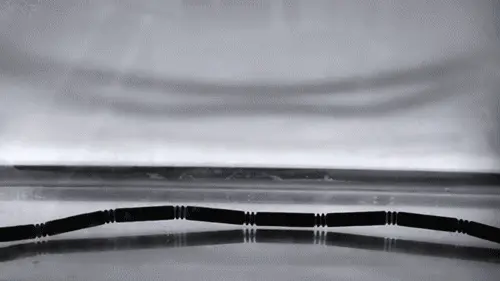
For those of you wanting to set up a no-maintenance 4D print at home, it might be just out of reach unless you have access to a bioprinter, a dual extruder printer, or a multi-material upgraded 3D printer. The 4D prints you’ll most likely be able to achieve at home will be strand assembly and active origami.
In the work based on MIT’s Self-Assembly Lab’s self-assembly strand, the videos often shown depict a 3D-printed line segment with joints that fold into a 3D cube after a matter of days. These joints are made of multiple materials: likely one water-loving and another water-hating on each side of the bending joint segments.
As the object is placed in water, the water-loving side can expand or extend so that more of its surface can touch the water. The water-hating side contracts or bends so that it can contact with itself or another surface instead of the water. By designing and assembling these joints based on the expected bends, the 2D line can become a 3D object.
Similar to this work, the Teaching Tech YouTube channel created a first experimental iteration to reproduce something similar to the self-assembly strand. An explanation of the thought process and their results can be seen YouTube, and the 3D printing object file can be found on Printables.
The final object was printed in PLA, TPU, and a dissolvable support filament. While the release of tension by the dissolvable filament is not reversible, this is still a great attempt at creating a 4D print at home. Additional credit should be given to the creator, as this design was able to reshape much faster than the project it set out to copy.
Possible DIY Projects
There are other ways for makers to get involved with active origami out there. For those of you with a Python background interested in CNC machining or flexible filament printing, you can check out these 2D-to-3D self-assembling structures. This is based on the work of the Architected Intelligent Material Laboratory at the University of Houston. Their work is called “bistable-auxetic-surface-structures”, and their base code can be found on GitHub.
If you’re looking for more day-to-day functionality from your 4D prints, think about what you can do with conductive filaments for making simple circuits. A good place to start is Chep’s explanation of getting to know your filament’s electrical behavior. Understanding the resistance is important, and you should always design your circuit – a process you can perform in Tinkercad – before you apply an electrical load. Some cool projects are a fully 3D printable flashlight and an LED spider. Teaching Tech has a video on this topic as well.
License: The text of "What Is 4D Printing? All You Need to Know" by All3DP is licensed under a Creative Commons Attribution 4.0 International License.

